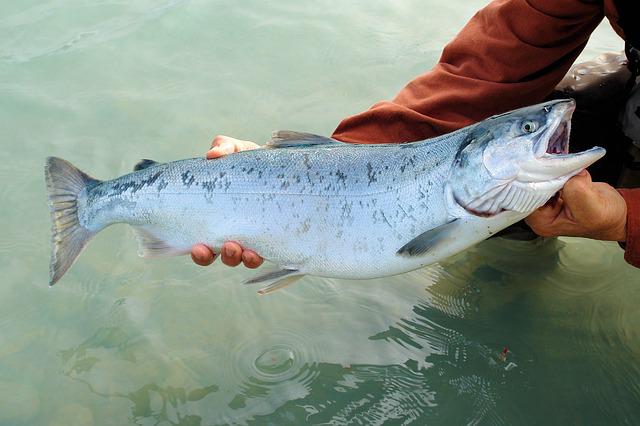A group of 23 science and policy experts from the United States and Canada recently published a review of mining risks to watersheds from Montana to British Columbia and Alaska.
The paper, published in the journal Science Advances, brought together experts in salmon ecology, watershed science, mining impacts, and mining policy to integrate knowledge from disparate research fields. The team, led by UM researchers at the Flathead Lake Biological Station, discovered that past and present mining pressures are widespread throughout the region and frequently overlap with important populations of salmon, trout, and char.
"Our paper highlights the mosaic of over 3,600 active and abandoned mines nestled among some of the most valuable fish habitats in Western North America," said Chris Sergeant, the paper's lead author, and an FLBS research scientist. "Every day, the largest of these mines processes approximately 160,000 metric tons of earth."
The sergeant stated that not all mines pose the same level of risk, but their investigation revealed that mining-related harm can be severe and long-lasting. The magnitude of mining pressures on these watersheds emphasizes the critical importance of accurately assessing risk to water, fish, and communities.
The study looked at the ecological complexity of rivers and how mines can have an impact on culturally and economically important fish species like salmon by contaminating water with heavy metals, burying stream habitats, and diverting water for ore processing. When not properly managed, these cumulative effects can be difficult to reverse and degrade landscapes for decades to centuries.
"Unfortunately, we are learning the hard way in some cases that mines can have profound impacts on aquatic ecosystems, leaching far down the watershed from the actual mine site, at scales not anticipated in the original impact assessment," said Erin Sexton, a paper co-author and FLBS senior scientist. "For example, impacts from the Elk Valley coal mining complex in southeast British Columbia have been documented over 155 miles downstream of the mines, crossing the international border between the United States and Canada."
The authors emphasize the importance of current and transparent science in managing the potential impacts of mines. New science on salmonid ecology, cumulative effects, and how climate change is changing these landscapes can help improve mine risk assessment.
Understanding stressor complexity and uncertainty, accounting for cumulative effects of mining activities across a mine's life cycle, developing realistic mitigation strategies, and recognizing the potential for climate change to magnify risk are the authors' four key issues that will be foundational to modern, science-based risk assessment and mitigation.
"Emerging science is revealing the complex realities of how salmon watersheds function in this era of climate change, as well as the numerous risk pathways posed by mines," said co-author Jonathan Moore of Simon Fraser University in British Columbia. "Informed decision-making will necessitate risk assessments that cover a wide range of topics, from cumulative effects to climate change."
While a low-carbon future will rely on mined minerals to some extent, it is critical to consider whether current and future mining projects are run in a way that protects fish, water, and well-functioning watersheds.
"Our paper is not for or against mining," Sergeant explained, "but it does describe current environmental challenges and gaps in the application of science to mining governance." "We see a need and opportunity for strong science-based and transparent risk assessment, as well as the incorporation of impacted communities' goals and values. Finally, it is possible that some specific locations are simply too valuable to risk with major mines."
Source: Materials provided by The University of Montana.
Reference: DOI: 10.1126/sciadv.abn0929

